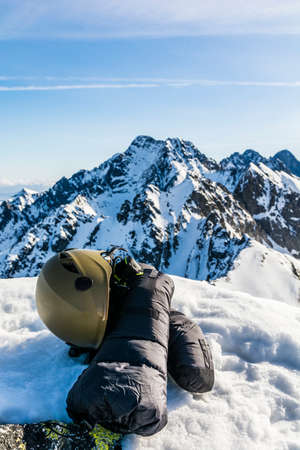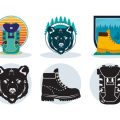1. Introduction
When it comes to exploring Americas vast wilderness, backpackers often face a big decision: head out alone or join a group expedition. Each style has its own vibe and set of challenges, especially when it comes to packing the right gear. In American outdoor culture, solo adventures are seen as a way to find independence and test personal limits, while group trips focus more on teamwork and shared experiences. Because of these differences, solo backpackers and group expeditions have unique gear needs and planning strategies.
Solo backpackers have to be completely self-reliant, meaning their gear lists need to cover every possible situation from shelter to safety. There’s no one else to share the load or lend a hand if something goes wrong. On the other hand, group expeditions can split up items like tents, stoves, and first aid kits, making it easier to carry some extra comforts or specialized equipment.
Key Differences in Gear Planning
| Aspect | Solo Backpacking | Group Expeditions |
|---|---|---|
| Packing Strategy | Lightweight & all-in-one solutions; everything must fit in one pack | Shared gear; ability to distribute weight across multiple people |
| Shelter & Sleeping | Single-person tent or bivy; ultralight sleeping bag/pad | Larger tents or tarps for sharing; communal sleeping pads possible |
| Cooking Gear | Personal stove & cookware; simple meals for quick prep | Larger stove systems; group cooking supplies for shared meals |
| Safety & Navigation | Individual emergency beacon/PLB; solo navigation tools/maps | Shared emergency kit; group navigation resources (GPS/map) |
| Food Storage | Bear canister/bag sized for one; compact food supply | Larger bear-proof containers; bulk food storage options |
| Entertainment/Comforts | Minimal extras due to weight restrictions | Ability to bring games, camp chairs, or luxury items for group enjoyment |
No matter which path you choose—solo or with friends—understanding these gear differences is key to staying safe and comfortable while enjoying the American outdoors.
2. Shelter Solutions
Choosing the Right Shelter: Solo vs. Group Needs
When it comes to backpacking in the U.S., your choice of shelter can make or break your trip, especially when comparing solo adventures to group expeditions. The gear you bring for a night out under the stars will depend on whether youre flying solo or sharing the trail with friends. Here’s a breakdown of what works best for each scenario, considering typical American backpacking environments like the Rockies, Sierras, Appalachians, and desert Southwest.
Shelter Options at a Glance
| Shelter Type | Best For | Pros | Cons |
|---|---|---|---|
| Ultralight Tent (1-person) | Solo Backpackers | Super lightweight Easy to pitch Good weather protection |
Less space Can be pricey |
| Bivy Sack | Solo Backpackers | Minimal weight Fast setup Stealth camping friendly |
Tight quarters Condensation issues Limited comfort in bad weather |
| Multi-person Tent (2+ people) | Group Expeditions | Shared weight Roomy and comfortable Great for bonding and morale |
Heavier overall Less privacy Slower to set up/take down |
| Communal Tarp/Shelter | Group Expeditions/Ultralight Groups | Flexible coverage Lightweight if shared Versatile configurations |
Less protection from bugs/weather Requires good site selection skills |
Shelter Considerations by Environment
Western Mountains (Rockies/Sierras): Sudden storms and wind mean reliable rainflys and solid stakes are key. Solo hikers often opt for sturdy ultralight tents, while groups split up bigger tents or tarps.
Eastern Forests (Appalachians): High humidity and bugs are common, so bug nets and ventilation matter. Bivy sacks may get stuffy; double-wall tents or tarps with bug screens work well.
Deserts (Southwest): Protection from sun and surprise rain is crucial. Tarps are popular with groups for shade, while soloists might use minimalist tents or cowboy camp with a groundsheet if weather allows.
Packing Tips:
- Solo hikers: Focus on low weight and quick setup—your shelter should fit your pack and your back!
- Groups: Share the load. Divide tent components or communal tarps among team members to balance packs.
- If you’re expecting rough weather, always prioritize stability and coverage over minimalism.
- No matter your group size, always bring an emergency bivy or backup shelter just in case plans change unexpectedly.

3. Cooking Systems
Solo Stove Setups vs. Group Cooking Gear
When it comes to cooking in the backcountry, your setup can look very different depending on whether you’re hiking solo or with a group. For solo backpackers, lightweight and compact is the name of the game. Most solo hikers opt for a small canister stove like the MSR PocketRocket or Jetboil MicroMo—both are super popular on American trails. These stoves pair well with single-person cook pots, which double as mugs and bowls. The goal: minimize weight, bulk, and cleanup.
| Solo Backpacker | Group Expedition | |
|---|---|---|
| Stove Type | Tiny canister stove (e.g., MSR PocketRocket) | Larger multi-burner or liquid fuel stove (e.g., MSR WhisperLite) |
| Cookware | Single pot/cup combo | Multiple large pots and pans for group meals |
| Fuel Needs | Minimal (small canister) | Higher (large canisters or liquid fuel bottles) |
| Packing Priority | Ultra-lightweight and compact | Shareable, more durable gear |
Meal Planning: One vs. Many
Meal planning also shifts depending on group size. Solo hikers typically lean on quick-to-cook American classics like ramen noodles, instant mashed potatoes, Knorr rice sides, and freeze-dried meals from brands like Mountain House or Backpacker’s Pantry. It’s all about simplicity and speed.
In contrast, groups can get creative with shared ingredients and divide cooking duties. Think hearty one-pot chili, pasta dishes, pancakes for breakfast, or even burritos using tortillas, beans, and cheese—all trail favorites stateside. With more hands to help carry gear and prep food, group expeditions often enjoy more elaborate meals that bring people together at camp.
Leave No Trace & Cleanup Considerations
No matter your group size, following Leave No Trace principles is key—especially when it comes to cooking and cleaning up. Solo hikers have it easier: less mess to deal with and fewer utensils to wash. Groups need to coordinate waste disposal (like packing out food scraps), use biodegradable soap sparingly (if at all), and scatter strained dishwater away from water sources.
| Solo Hiker Cleanup | Group Cleanup | |
|---|---|---|
| Dishes per Meal | 1-2 items (pot/mug/spork) | Multiple pots, pans, utensils per person |
| Waste Management | Packs out all trash; usually minimal scraps | Packs out more trash; must manage group food waste responsibly |
| LNT Focus Points | Avoiding spills; minimizing soap use; efficient packing out of trash | Coordinated trash collection; straining dishwater; using community clean-up systems like collapsible sinks or mesh strainers |
4. Safety & Communication
Staying Safe in the Backcountry: Solo vs. Group Needs
When you’re heading into the American wilderness, safety and communication gear is a big deal—especially when comparing solo backpacking to group expeditions. The right equipment can make all the difference if things go sideways. Let’s break down what’s essential for each situation.
First Aid: What You Need
| Solo Backpacker | Group Expedition |
|---|---|
| Compact first aid kit Personal medications Blister care items Emergency whistle |
Larger, shared first aid kit Extra supplies for multiple people Splints or trauma gear Medication for common group issues (allergies, pain relief) |
Navigation Tools: Staying on Track
| Solo Backpacker | Group Expedition |
|---|---|
| GPS unit or smartphone with offline maps Paper topo map & compass (backup) Route plan left with someone at home |
Multiple paper maps & compasses (for redundancy) At least one GPS device per subgroup Shared route plan and check-in schedule within the group |
Emergency Communication: Reaching Out for Help
| Solo Backpacker | Group Expedition |
|---|---|
| Personal Locator Beacon (PLB) or satellite messenger Cell phone (if coverage is possible) Signal mirror or flare as backup Note: In remote areas like the Rockies or Sierra Nevada, a PLB is considered essential by American search and rescue guidelines. |
Group radio system (FRS/GMRS radios) Satellite phone for long-distance emergencies At least one PLB or satellite messenger carried by a designated member Tip: Radios help keep everyone connected on-trail, especially in larger parks where cell coverage is spotty. |
American Wilderness Standards to Remember:
- The Ten Essentials, promoted by organizations like the National Park Service and REI, always include navigation tools and ways to signal for help.
- Solo hikers are strongly encouraged to carry their own satellite communicator or PLB because there’s no backup if something goes wrong.
- Groups should spread out emergency supplies so no single lost pack leaves everyone stranded.
- The “leave your itinerary” rule applies everywhere: always let someone know your trip details before heading out.
5. Water Filtration & Storage
When it comes to backpacking, clean water is a top priority. But the way you approach water filtration and storage can change a lot depending on whether you’re going solo or heading out with a group. Here’s how the options stack up for both situations:
Pump Filters
Solo Backpackers: Pump filters are reliable and relatively lightweight, making them a solid choice for solo hikers who want control over their gear. You can stop at any stream, quickly pump what you need, and get back on the trail.
Group Expeditions: Pumping water for several people can become tedious fast. Sharing one pump filter slows things down, especially if everyone needs to fill multiple bottles or reservoirs.
Pros & Cons of Pump Filters
| Scenario | Pros | Cons |
|---|---|---|
| Solo | Lightweight, personal use, quick fills | Manual effort required, small capacity |
| Group | Reliable filtration | Slow for large groups, tiring to use repeatedly |
Gravity Bags
Solo Backpackers: While gravity systems are easy to use, they might feel like overkill for just one person unless you want to set up camp and filter a lot at once.
Group Expeditions: Gravity bags shine with groups. You fill up the bag, hang it from a tree, and let gravity do the work while everyone fills their bottles below—no pumping required.
Pros & Cons of Gravity Bags
| Scenario | Pros | Cons |
|---|---|---|
| Solo | No manual pumping, hands-free operation | Bulkier system, slow for small amounts |
| Group | Easily filters large volumes, good for base camps | Larger to pack, setup space needed (needs to be hung) |
Chemical Treatments (Tablets & Drops)
Solo Backpackers: Chemical treatments are lightweight and simple—just add to your bottle and wait. They’re perfect if you want to keep your pack light or need an emergency backup.
Group Expeditions: Treating multiple liters at once can take longer and requires careful measurement. Not everyone enjoys the taste of treated water.
Pros & Cons of Chemical Treatments
| Scenario | Pros | Cons |
|---|---|---|
| Solo | Tiny pack size, no moving parts, affordable backup option | Taste may be off-putting, wait time before drinking (usually 30+ min) |
| Group | Simplifies gear list in emergencies or as backup to main filter system | Inefficient for large volumes, risk of inconsistent dosing among group members |
Packing Tips: Water Storage Solutions by Group Size
| User Type | Main Storage Options | Notes/Best Practices |
|---|---|---|
| Solo Backpacker | Nalgene bottles, soft flasks, 1-2L hydration reservoirs | Avoid carrying too much weight; refill often from reliable sources |
| Group Expedition | Larger collapsible jugs (6-10L), shared reservoirs | Dole out group tasks: designate someone for filling/transporting bulk water |
The Bottom Line: Choose What Fits Your Crew (or Just You!) Best
If you’re hiking alone, prioritize ease and simplicity—pump filters and chemical treatments work well without weighing you down. For groups, think about efficiency: gravity bags make camp life easier when everyone needs water at once. And no matter which system you pick, always carry a backup treatment method just in case something goes wrong on the trail!
6. Packing & Weight Distribution
When it comes to packing for backpacking trips, solo hikers and group expeditions in the U.S. handle gear weight very differently. Understanding how to manage, redistribute, or share your load can make or break your trip—especially if you’re tackling long trails like the Appalachian Trail or Pacific Crest Trail.
Solo Backpackers: Carrying It All
As a solo backpacker, you’re responsible for every single item in your pack. This means you carry all essentials, from shelter and cooking gear to first aid and navigation tools. With no one to split the weight with, ultralight strategies are popular among American solo hikers. They often swap heavier items for lightweight alternatives and ditch non-essentials entirely.
Common Solo Packing Tips:
- Invest in ultralight gear (tent, sleeping bag, stove).
- Practice “one item, multiple uses” (like using a buff as a towel or pot holder).
- Regularly reevaluate your pack before each trip.
Group Expeditions: Sharing the Load
In group trips, you have the advantage of splitting communal gear—think tents, stoves, water filters, or even food supplies. American thru-hiking groups often assign shared items to specific people so no one is overburdened. The key is communication and planning ahead.
| Gear Type | Solo Backpacker | Group Expedition |
|---|---|---|
| Tent/Shelter | 1-person tent or bivy sack | Shared tent (carried by 1-2 people) |
| Cooking System | Personal stove & pot | Shared stove & larger pot (split between group) |
| Water Filtration | Personal filter/purifier | Larger filter (carried by 1 person) |
| First Aid Kit | Small personal kit | Larger kit (shared among group) |
| Food Supplies | Individual meals/snacks | Bulk food (distributed for carrying) |
Packing Tips from American Backpackers:
- Assign Group Gear: Make a list of shared items and who will carry what before hitting the trail.
- Even Out the Weight: Check everyone’s base weight and adjust so nobody is overloaded.
- Pace & Preferences: Consider each member’s hiking speed and strength when dividing gear.
- Packing Parties: Many U.S. groups do a “gear shakedown” together before big trips to eliminate duplicates.
A Quick Comparison Table:
| Packing Style | Main Challenge | |
|---|---|---|
| Solo Backpacker | Carries everything alone; prioritizes weight savings. | No ability to share or redistribute heavy items. |
| Group Expedition | Splits common gear; plans as a team. | Needs strong coordination to avoid redundancies or gaps. |
The bottom line? Whether you’re going solo or with friends, smart packing and thoughtful weight distribution are keys for safe and enjoyable adventures on America’s trails.
7. Comfort & Camp Life
When it comes to backpacking, comfort and camp life can look very different depending on whether youre heading out solo or with a group. In the U.S., backcountry culture values both rugged independence and shared experiences, so your approach to comfort will often reflect your trip style.
Solo Backpackers: Prioritizing Lightweight Personal Comfort
When you’re on your own, every ounce counts. Solo backpackers tend to focus on compact, lightweight gear that provides just enough comfort without extra bulk. Here are some common comfort items for solo hikers:
- Minimalist Sleeping Pad: Smaller and lighter for one person.
- Ultralight Camp Chair or Sit Pad: Many soloists use foldable foam pads or skip chairs altogether.
- Personal Entertainment: Downloaded books, music, podcasts, or a journal for quiet nights.
- Single-Mug Cooking System: One pot or mug is usually enough.
Popular Solo Comfort Items in the U.S.
| Item | Description | Cultural Note |
|---|---|---|
| Sit Pad | Light foam pad for sitting on logs or rocks | Loved by thru-hikers on trails like the PCT and AT |
| Kobo/E-Reader | Easily carries multiple books in one device | Great for long solo evenings at camp |
| Pocket Journal | Takes up little space, good for notes or sketches | A tradition among many American backpackers |
Group Expeditions: Sharing the Load, Boosting Morale
In groups, comfort items can be shared, making it possible to bring bulkier gear that enhances everyone’s experience. Morale boosters become especially important on longer trips. Here’s what you might find in a group setup:
- Larger Camp Chairs: Folding chairs or stools can be split among the group.
- Communal Games & Entertainment: Card games, frisbees, or story-sharing around the fire are classic American traditions.
- Shared Cooking Systems: Larger pots and stoves make meal prep easier for several people.
- Bigger Tarp or Shelter: Provides space for socializing if the weather turns bad.
Typical Group Comfort Gear in the U.S.
| Item | Description | Cultural Note |
|---|---|---|
| Campsite Hammock | A popular spot for relaxing after a long hike; sometimes brought as an extra communal item | Campsite hammocks are a staple at many American campsites |
| Campfire Setup (where permitted) | A grill grate, marshmallow sticks, or portable fire pit for smores and warmth | S’mores and storytelling are classic parts of U.S. camp life |
| Pocket Games (Uno, cards) | Tiny weight penalty for big morale boost during downtime | A favorite on Boy Scout and family trips across the States |
Personal vs. Communal: What to Share?
The distinction between personal and communal comfort items is key. Solo hikers carry only what they’ll use, while groups can divide up heavier luxuries. The table below summarizes this difference:
| Solo Backpacker | Group Expedition | |
|---|---|---|
| Camp Chair/Pad | Tiny sit pad or none at all | Larger chairs/stools distributed among members |
| Entertainment Items | E-reader/podcast/journal (individual) | Pocket games/cards (shared) |
| Shelter Space | Tent just big enough for one person + gear | Larger tent/tarp area for gathering |
| Cooking Gear | Small stove/cup per person | Bigger stove/pot system shared by all |
| Lounging Options | N/A or hammock just for self | Campsite hammock/extra tarps for group relaxation |
The Takeaway: Comfort Reflects Your Trip Style
Your choices about camp comfort really depend on whether youre going solo or with friends. Whether its keeping things light and simple on your own, or packing in a few extras to share with your crew, each approach reflects classic traditions in American backcountry adventure—finding ways to unwind and enjoy life outdoors after a day on the trail.


